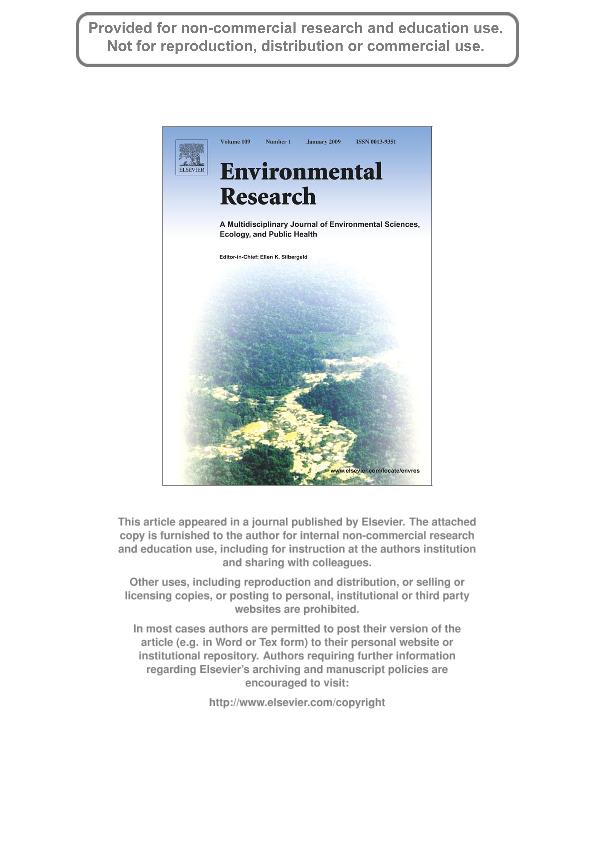Artículo
Comparison of the air pollution biomonitoring ability of three Tillandsia species and the lichen Ramalina celastri in Argentina
Fecha de publicación:
12/2009
Editorial:
Elsevier Inc
Revista:
Environmental Research
ISSN:
0013-9351
Idioma:
Inglés
Tipo de recurso:
Artículo publicado
Clasificación temática:
Resumen
Bioaccumulation ability and response to air pollution sources were evaluated for Tillandsia capillaris Ruíz and Pav. f. capillaris, T. recurvata L., T. tricholepis Baker and the lichen Ramalina celastri (Spreng.)Krog. and Swinsc. Epiphyte samples collected from a non contaminated area in the province of Córdoba were transplanted to a control site and three areas categorised according to agricultural, urban and industrial (metallurgical and metal-mechanical) emission sources. Bioindicators were exposed for 3-, 6- and 9-month periods. A foliar damage index was established for Tillandsia and a pollution index for the lichen, and S, Fe, Mn and Zn concentrations were determined. An order of efficiency for the species and conditions studied is proposed taking into account heavy metal accumulation: T. recurvata > T. tricholepis >R. celastri >T. capillaris. All species studied showed Mn to be related to agricultural activity and Fe to industries and soil particles, and Zn was related to urban and industrial sources. As far
as physiological response is concerned, T. tricholepis and T. capillaris were more sensitive to agricultural activities, whereas T. recurvata was sensitive to urban and industrial sources, and only partially to agricultural sources. No relationship was found for R. celastri.
Archivos asociados
Licencia
Identificadores
Colecciones
Articulos(IMBIV)
Articulos de INST.MULTIDISCIPL.DE BIOLOGIA VEGETAL (P)
Articulos de INST.MULTIDISCIPL.DE BIOLOGIA VEGETAL (P)
Citación
Bermudez, Gonzalo Miguel Angel; Rodriguez, Judith Hebelen; Pignata, Maria Luisa; Comparison of the air pollution biomonitoring ability of three Tillandsia species and the lichen Ramalina celastri in Argentina; Elsevier Inc; Environmental Research; 109; 1; 12-2009; 6-14
Compartir
Altmétricas




